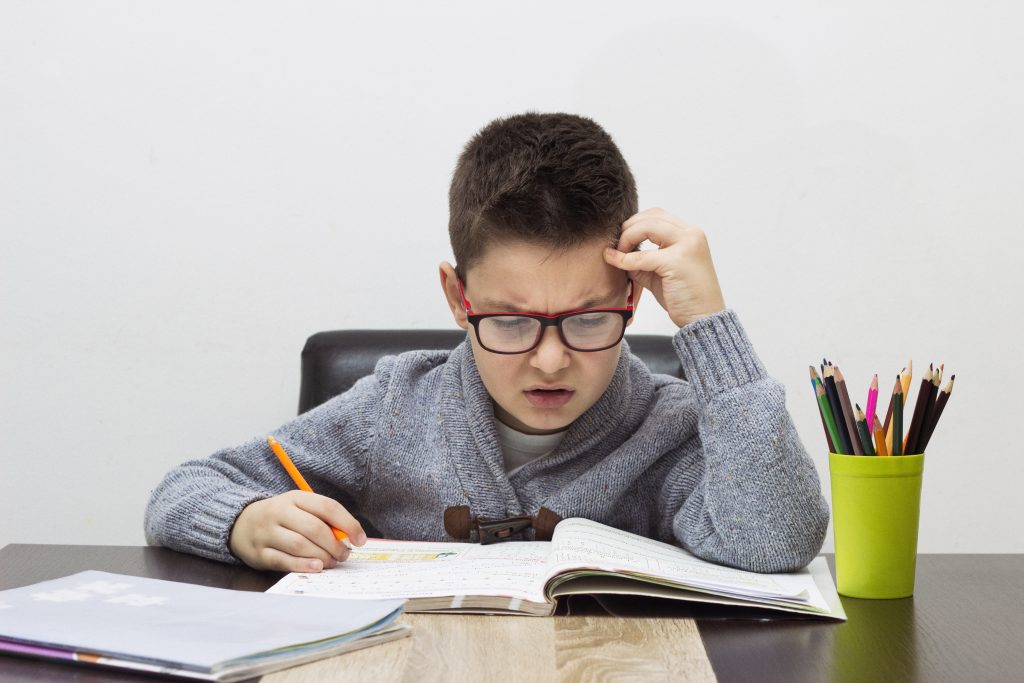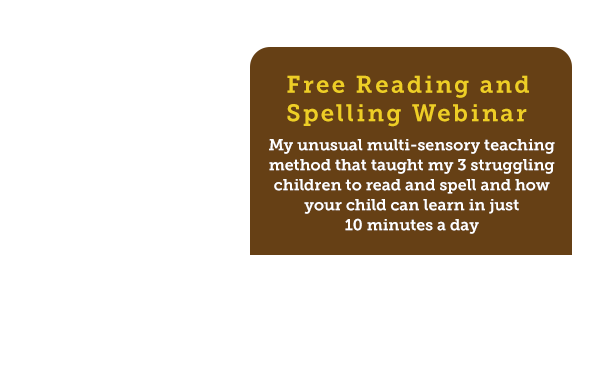When your child is struggling to read, the best place to start is with a basic eye test.
But… what do you do once you’ve seen the optometrist and you’ve been told that your child has perfect vision 20/20 vision and they don’t need glasses…..yet you know for a fact, that they are still having trouble reading?
Maybe they are squinting or saying they can’t see the words properly… or worse still… avoiding any form of reading altogether. Your child doesn’t need to be able to read alphabet letters or words to have their eyes checked for a visual processing problem. The earlier a vision problem is detected, the better… for obvious reasons.
Let’s say, you now know that your child has perfect vision, which is great news, but now you have to consider that the information their eyes are seeing is not being processed correctly inside the sight centre in their brain.
When an individual looks at letters, numbers and words on a page, their eyes see the series of graphic symbols. This information is then passed along the optic nerve to the brain where it is processed, so that the visual cues can be interpreted and the meaning added.
There are a few different causes of a visual processing deficit.
Let’s start with the fact we have two eyes.

Working together, both of our eyes see the same words on a page. The information needs to be received by both eyes at the same time and speed, and then processed in the brain at the same rate for this to be effective and efficient neurologically. When this system is not working properly, it can result in an issue. This timing process is called ‘Vergence’. When someone has unstable vergence, a visual processing deficit can occur.
Other causes of visual processing deficits relate to the ability of the eyes to respond, focus and hold attention and the brain’s ability to process the information that is being sent via the optic nerve.
Visual processing deficits can be hard for a lay person to identify, but there are signs to look for.
Here are 5 signs to look for if your child has already had their eyes tested, but is still struggling to read.
- The words don’t appear like they should.
Start by asking your child; “Do the words behave on the page or are they playing tricks on you?”
They may say:
“I can’t make out the words, they’re blurry.”
“The words shake or move around on the page. “
“The letters go in and out of focus.”
“The words are falling off the page.”
“There is a white glare behind the words and it’s too bright.
“There are white lines running down the page.”

Your child may see words in parts instead of whole words. For the word ‘become’, they may say ‘beco’ and then ‘me’, instead of be-come, if their spacing is incorrect this can indicate an issue.
This is also true if the child skips smaller words or changes words altogether.
It is really important to ask your child what they see when they look at the page.
- Your child reverses and confuses letters and numbers.
If your child continually confuses certain letters that look similar, like b’s and d’s, p’s and q’s, o’s and c’s, they read words and numbers from right to left instead of left to right.
- It takes forever for them to take down notes from the board.
Every student in a classroom will vary in the time it takes them to copy notes from the board. This will vary on the time of day, the child’s interest in the subject and how they feel on a given day. If however, they are always the last to finish and they are really a long way behind everyone else, this may indicate a visual processing issue.
- Your child has poor spatial awareness.
Spatial awareness is a complicated way of saying that you understand the relationship of your body in space and distance and the relationship of two or more objects to each other. An adult with poor spatial awareness may misjudge a step when walking down stairs or bump into the car in front when parking (a costly error). A child may appear clumsy; tripping over their own feet or bumping into things. They may stand too close or too far away from things or have difficulty writing within the lines. They may go to catch a ball and it may land right on their chest instead of in their arms. They may even see two balls instead of one.
- Reading makes your child tired or gives them a headache.

Remember that we are talking about children who have already had their vision tested. Reading shouldn’t make your child tired or give them a headache. If it does, it may indicate they are having to work far too hard, simply to understand what they are reading.
It is vital to understand that a child may not see what you see when they look at a page in a book. They may think what they are see is normal.
Someone who is colour blind will only truly understand what other people see if they are given special glasses. This is because they have spent their whole life seeing only one way.
Some real life examples:
Sarah
At 6 years old, Sarah would put her arms around the edge of her book when she was reading. Her confused teacher asked her to sit properly and put her hands in her lap, so she could concentrate on her reading. After a while he turned to see her hands had crept back around the book. He asked her what was going on? After her teacher agreed not to laugh at her, Sarah told him she had to sit with her hands like that so the words didn’t run off the page.
Jack
Jack didn’t know he had a visual processing problem until much later in life. As builder’s labourer, his back was starting to give out and he wanted to do a business degree at night school. He had never been very good at reading and although he was coping with the course work, his slow reading was really impacting on his ability to complete the work. He was almost about to give up on his degree, when he heard about visual dyslexia and tinted glasses. He was tested and found out that blue tinted lenses worked and improved his reading rate.
If you think your child might be showing some of these signs, the next logical step after a basic sight test, is to have your child tested for visual processing deficit.
To find a service provider, you can use our Free Service Provider Directory.



















My son has a visual processing disorder and has undergone an intensive 14 week program. I didn’t realise how much it was impacting on his life. Within 3 weeks his ability to focus had gone from 25% to 75% and he was able to ride his bike without training wheels for the first time. It is definitely something worth investigating. We saw 4 different optometrists and it wasn’t until we went to the behavioural optometrist that we found the issue.
My children have visual distortions called Irlen. It’s a visual processing condition that is corrected using, firstly, colour overlays and then tinted glasses, diagnosed by an Irlen practitioner. This condition deals with depth perception (i.e. riding a bike, catching a ball) as well as reading difficulties. See the Irlen website for details.
My understanding is that brain misinterprets the messages sent via the optic nerve, which are over stimulated by different colours of the light spectrum. Everyone’s colour sensitivity is different so filters have to be individually diagnosed – some people need to filter our blue light, others red, others a combination.
My son has glasses with 3 colour filters, my daughter has 6 filters in her glasses. The diagnosis doesn’t stop until the combination of filters ensure the letters on the page are crisp and stable. My son was delighted when the letters stopped running away! My daughter can now kick a football and is playing in a girls football team. But the best thing ever is the fact that she now believes she can read. She is happy and confident at school and is working around her learning barriers. She is dyslexic too. It’s worth investigating.